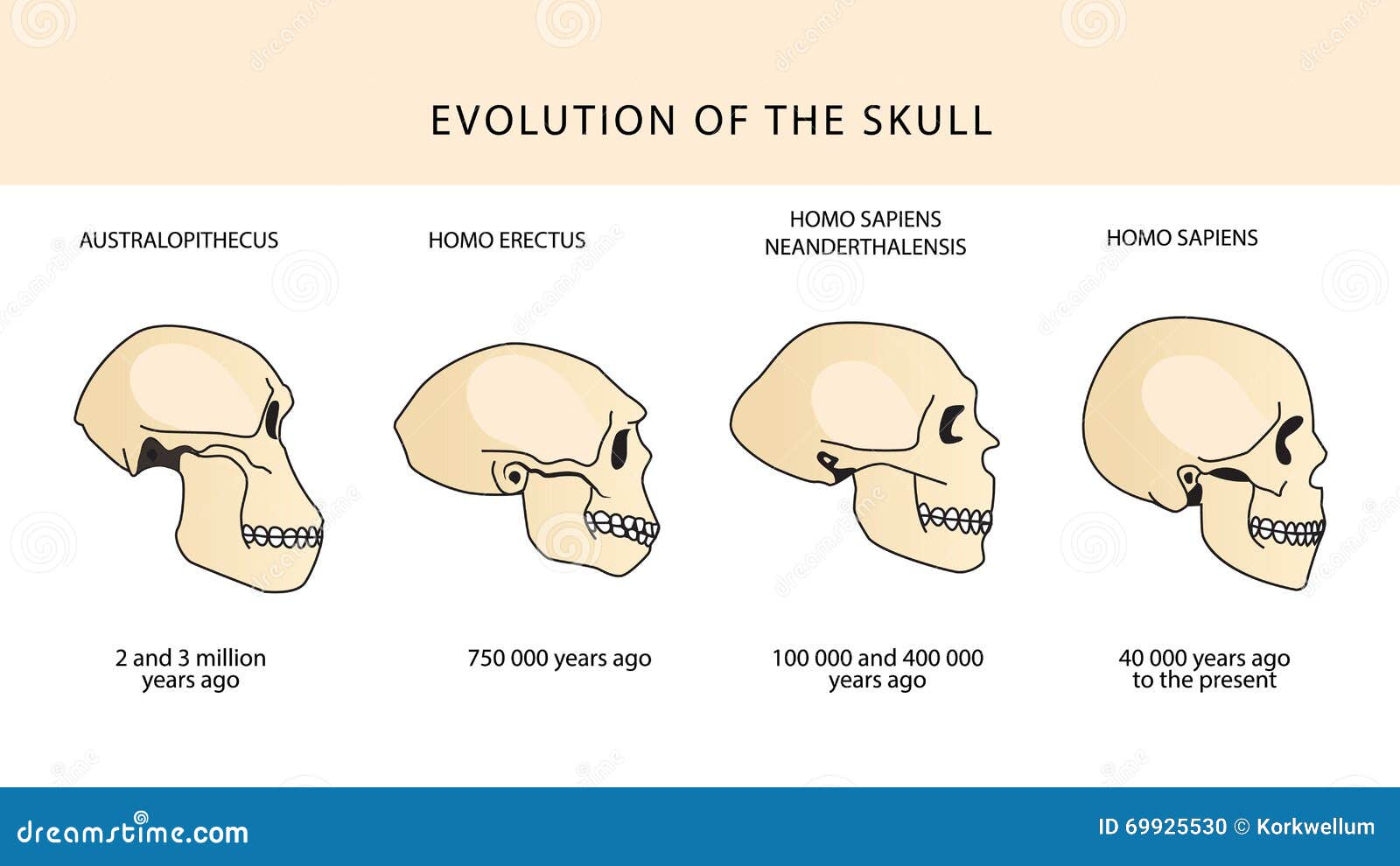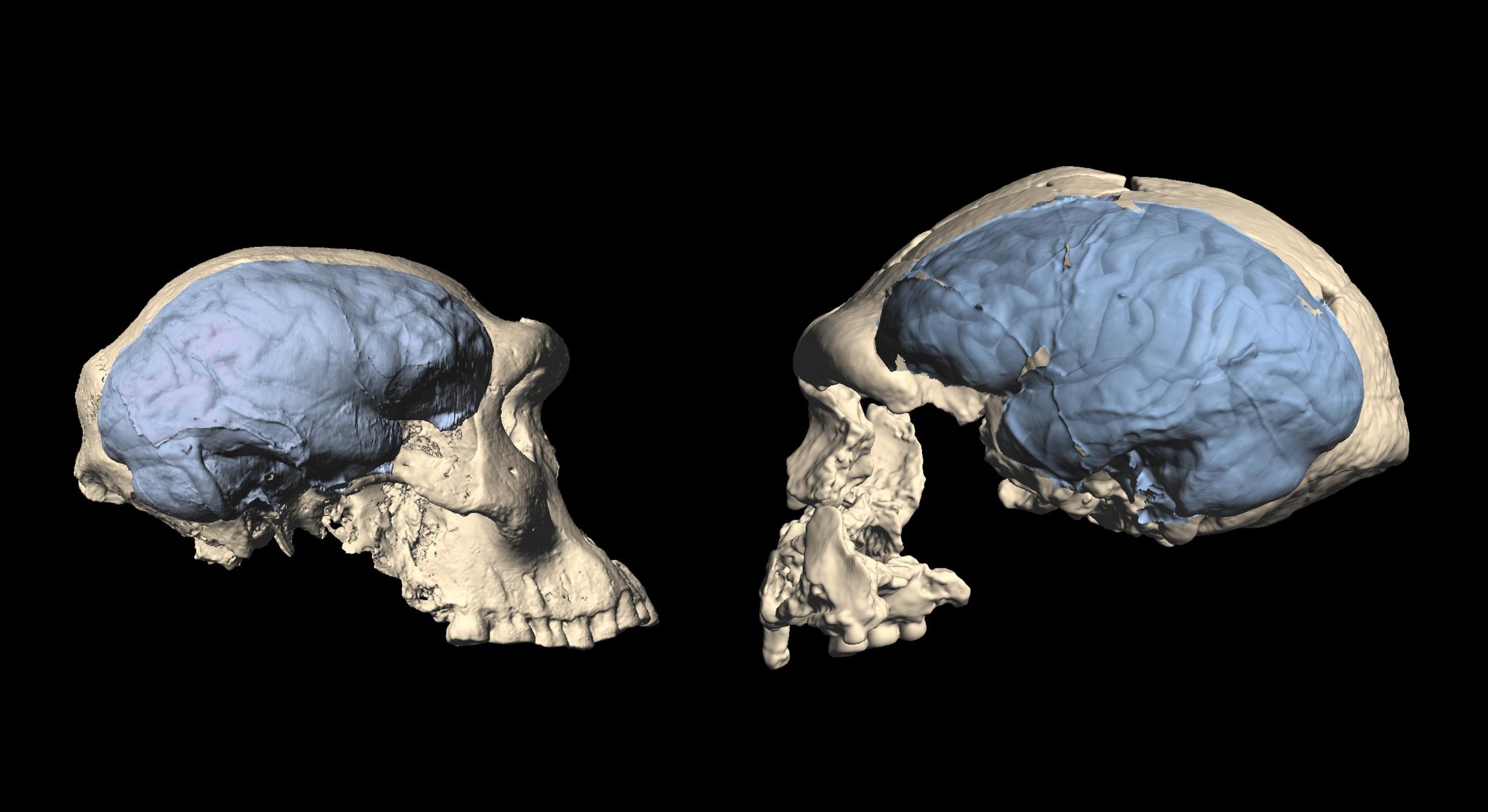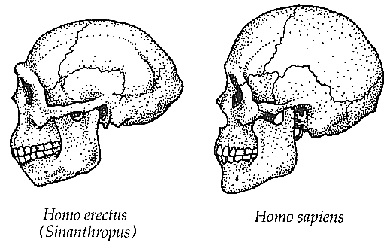

Such arguments have become more common in the 21st century with the discovery of each new fossil that challenges conventional thinking about the evolution of hominins - humans and our nearest ancestor and kin species. When researchers with different visions look at the same ancient skull, often heated debates erupt.
#EARLY HOMO SKULL SKETCH WINDOWS#
“Our mindsets are like shop display windows that separate us from the mannequins: We look at these fossil skulls through our own mirror images and imaginations,” Zollikofer says. “The head, and especially the face, is the part of a person that we most commonly engage with, and also usually self identify with,” says University of Tübingen paleoanthropologist Katerina Harvati, who co authored a 2019 study in Nature Ecology & Evolution on the evolutionary history of the human face.įossil skulls, she says, “have the ability to convey not only a lot of information about the species to scientists, but also can give an immediate, intuitive impression of what an individual would have been like as a person when alive - and can therefore more easily capture the imagination of both scientists and the public.”Īnd that, quite frankly, is where things get messy.Ĭhristoph Zollikofer, an anthropologist at the University of Zurich, cautions that the sheer charisma of fossil skulls - of being face-to-face with an individual who lived thousands or even millions of years ago - can lead even the professionals astray.
#EARLY HOMO SKULL SKETCH CODE#
What differences do you observe? Given what you saw for species differences in previous fossil comparisons, do you think there are enough differences to consider them two different species?Ĭonsider other features: what similarities do you see between the two fossils?īased on your observations, do you think that H.Much of the new research involves high-tech analysis of fragmentary fossils or genetic code - but no single tooth, scrap of finger bone or shiny piece of lab equipment captures our attention quite like a skull.

Other paleontologists prefer to “lump” similar fossils explaining the diversity as natural variation or differences between the sexes.Ĭompare the type specimens for Homo habilis and (possible) Homo rudolfensis. This fossil collection, however, does vary significantly in facial and cranial size, suggesting to some they should be “split” into two separate species. The earliest fossils that belong to this genus appear between 2.8 and 2.5 mya, and they extend to about 1.7 mya. The genus Homo suggests reliance on tools as well as dietary and behavioral flexibility. Size of molar and premolar chewing surfaceīased on your observations, what are two major trends that continue across the genus Homo? You can record your observations using comparative terms such as “largest”, “smallest”, “most prognathic”, in addition to specific descriptive terms like “parabolic” or “U-shaped” that were presented in the chapter.Įxtent of prognathism (jutting out of lower face) If possible, you are encouraged to open two or more of these links at the same time (in different windows) to allow you to look at them at the same time and compare them. In the table below, each species’ name contains links to 3D scans of fossils from Sketchfab. Students will then complete data tables and answer questions about these models. In this activity students utilize links to 3D models of several hominin species and early hominin tools (available at, , and ) to make observations about and compare them. To understand the big picture - the key changes with the advent and spread of early Homo - students will examine and record the differences between Australopithecus africanus, Homo habilis, and Homo erectus. For example, all Homo habilis could be lumped as Homo habilis, or split into Homo habilis and Homo rudolfensis.īy approximately 2.5 million years ago (mya), the earliest members of the genus Homo ( Homo habilis) had developed, and by 1.6 mya Homo erectus had spread throughout Africa and Asia. Debate surrounds the classification of both species, primarily about whether they should be lumped into one species each, or split into two.

Both species overlap with the end of the Australopithecines chronologically, with Homo erectus outliving any of the rest. In this lab students examine fossils of the earliest species of the genus Homo: Homo habilis and Homo erectus.


 0 kommentar(er)
0 kommentar(er)
